 Swimming pool painting by Daniel Senise, at 15 Central Park West apartment.
Swimming pool painting by Daniel Senise, at 15 Central Park West apartment.
Design
At Home with Art: The Work of Cristiana Mascarenhas
We are exposed to so much art today, perhaps more now than ever before, from the many galleries, to the auction houses, to the ever-growing number of art fairs. But what do we do with all this art that inspires us? New York City–based architect Cristiana Mascarenhas has established herself as a designer with a special talent for doing just that: to find a home for art in homes. With projects all over the world, from Miami to Rio de Janeiro, Mascarenhas has developed (through her Upper East Side office, In Plus) a special sensibility for integrating art into her designs, and thus into the everyday life of her clients.

In the dining room of 15 Central Park West, Cristiana Mascarenhas placed a sculpture by Márcia Grostein, part of the Cadeiras series, in the center of the shelf. All photography courtesy of Cristiana Mascarenhas/In Plus.
Born and raised in Brazil, Mascarenhas approaches each project in a very personal way—developing a close relationship with her clients, which then provides her with useful insight on what art to choose and bring into their homes. An avid art aficionado, she has a keen interest in all aspects of the art world, be it the work of an established artist like Robert Kelly or Marcia Grostein, or an up-and-coming artist, such as Manuel Esnoz. We recently had a chance to chat with Mascarenhas about the role art plays in her designs and the interesting process of collaborating with collectors.
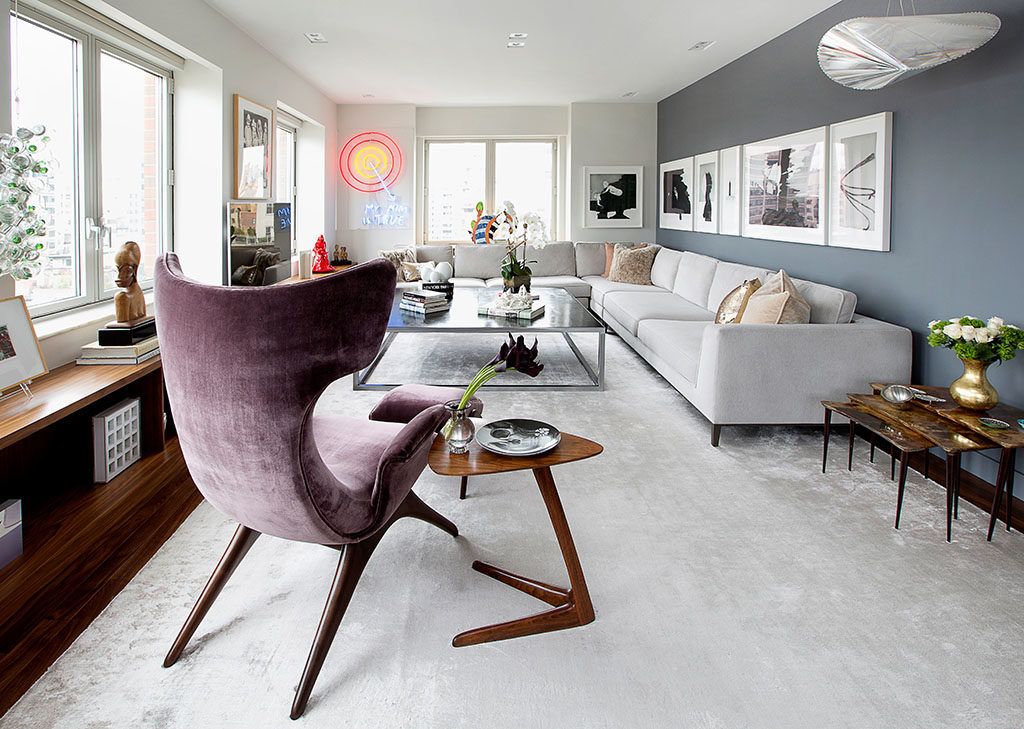
In an apartment on 65th Street in Manhattan are a chair by Vladimir Kaganin in the foreground, lighting by Olafur Eliasson, and a series by Kara Walker above the sofa to the right.
Paul Clemence/Modern Magazine: Has art always been a part of your projects?
Cristiana Mascarenhas: I have always liked art. And at one point early on I had a client that was a serious collector and I learned a lot about art from him. I think art is something that the more you get involved with, the more addictive it is. And then it becomes hard to just buy a commercial wall piece when you know that if you look, you can find [more unique] art at the same price equivalent.
MM: How do you go about selecting works of art?
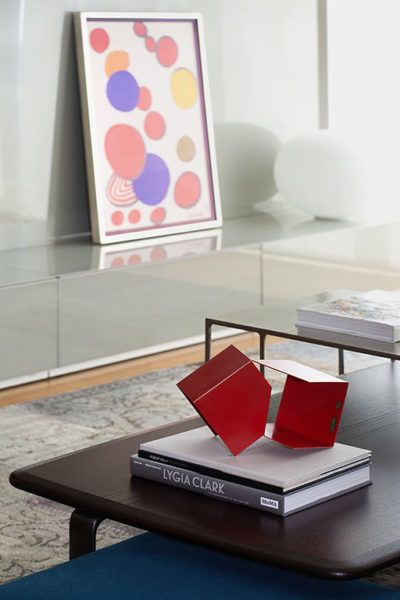
Small red sculpture by Franz Weissman, and a painting by Alexander Calder, at the West 56th apartment designed by Mascarenhas.
CM: It’s filtered through my taste, but it has to align with the clients’ wishes and sensibilities. They [clients] are all different: some more inclined to abstraction, others to figurative. I select work from the input I get and then propose something I feel would be in tune with that and the scheme I designed.
MM: And how do you balance your perspective and opinion with the client’s taste?
CM: If they are new to this world of art, they usually trust my guidance—just as they do with my designs. When the client is a collector with experience, the relationship is a bit different since they already have a sense of what appeals to them and what they are interested in.
MM: And when the client does not like a proposed piece?
CM: They are very vocal about it, and they should be, after all they will have to live with the piece. They have to be happy being next to it.
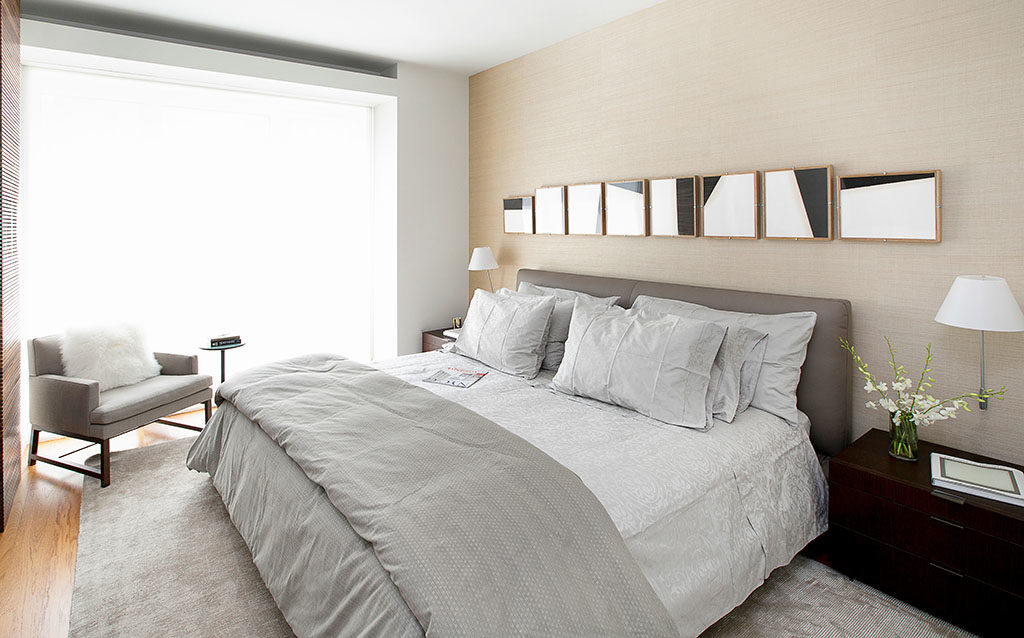
Above the bed, art work by Dario Escobar, at West 56th Street apartment.
MM: So how does it work when the client is already a collector?
CM: When there’s already a collection, I work with it in mind. For example, when I recently walked into the condo of a new client here in Manhattan, I came across a great collection. Finding the best placement for the art was critical to this project.
MM: Could you give me a specific example of how that worked?
CM: In this case, the clients had a beautiful five-piece Kara Walker set, an important work, which was hanging in the TV room. And right away I knew that piece needed a more prominent place, and so when designing the main living room, it was one of the central elements to be considered.
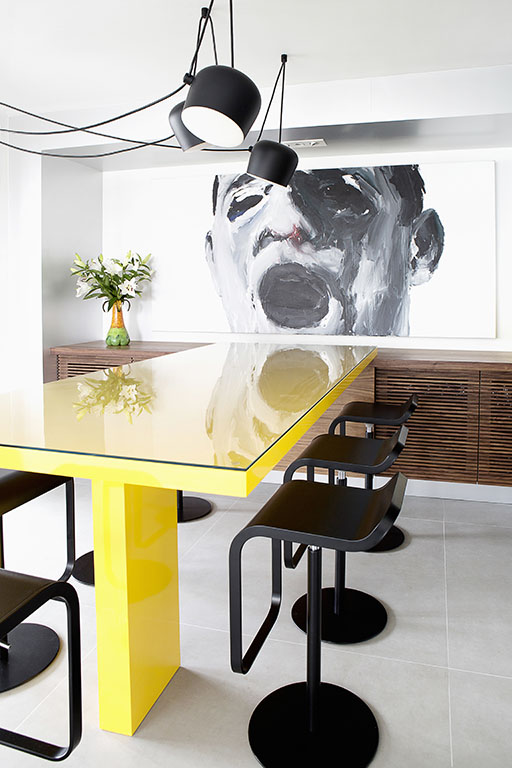
Yellow table by the designer and a self-portrait by Santiago Ydanez at Galerie 57th Street.
MM: So in this scenario, when there is an existing collection, do the pieces influence the selection of furniture and other design elements?
CM: Yes, all has to go with the flow. If there’s already an art collection you have to be careful with the use of color—avoid bright, bold colors that might not play well with the pieces, and compete with the color in the art. What should show is the art.
MM: Where do you find the art for your projects?
CM: From many places, depending on the project. Some of my Brazilian clients in New York want Brazilian art so I bring some of the art from Brazil. I also work with art consultant Fabricio Marcolini—I tell him what I am looking for—the mood and the size of the space—and he offers me ideas. And then here in New York we have so many galleries, so many resources. The client’s budget usually informs where I should search.
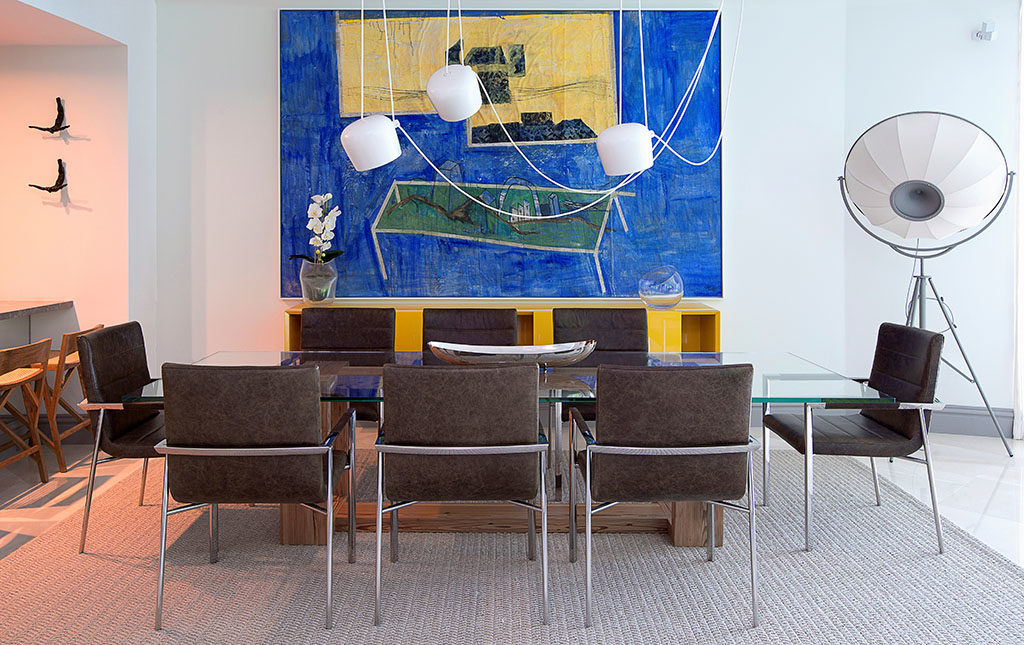
Untitled, 2006, painting by Horacio Sapere in a Bal Harbour apartment Mascarenhas designed in Miami.
MM: What is the biggest challenge in placing art in a project?
CM: More often than not, it is actually making sure that the right piece for the space also fits within the client’s budget.
MM: Why is art important in a project?
CM: Art brings life to a project; it brings life to a home.












